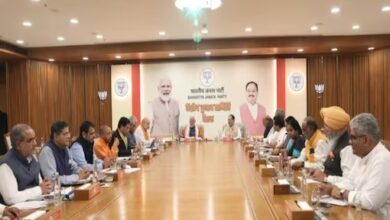Ram Temple: “An engineering marvel that can endure for a millennium
The project engineer of the future Ram temple, Girish Sahasbujhini, told the media on Tuesday at the site in Ayodhya that while construction is still ongoing, the completed structure will be an engineering marvel that can withstand the whims of time and climate for at least a millennium.

Described in detail, Sahasbujhini’s temple is predicted to last between a millennium and two and a half, meaning that it will be resilient enough to resist degradation or destruction. On its whole, he said, the building would be a stunning fusion of South and North Indian architecture. According to the principal project engineer, the finished edifice will be furnished with all the amenities of today. It will be an architectural marvel that tells the tale of India’s rich cultural diversity and spiritual unity.
The outer wall (parka) of the temple complex and the remaining smaller temples in the complex’s corners will resemble Dravidian architecture, which skillfully blends the architectural styles of the north and south, according to Sahasbujhini. “The main structure of the temple is being built following the Nagar style of architecture quintessential of north India.”
He goes on to describe the combination of regional variety, saying, “The superstructure’s stone came from Rajasthan, the flooring’s stone came from Madhya Pradesh and Rajasthan, and the granite used in the temple’s plinth came from Karnataka and Telangana.
Additionally, the artisans at work come from all over the nation, he continues. Odishan artists are responsible for the iconography on the sand stones, while workers at an Andhra firm have employed artists from Tamil Nadu to complete woodworking projects. Brassware has been sourced from Moradabad, while Maharashtra is the source of the gold and teakwood used in the main structure. Gujarat has also contributed to the temple’s design, as it is home to architect Chandrakant Sompura.
Regarding the difficulties encountered during building, Sahasbujhini states that the location was the greatest obstacle. By selecting the ideal location, one may save building costs. Here, Ram Lalla has selected the location on his own. To meet his expectations, we had to adjust our own engineering sense,” he says.
Meeting the ardent supporters’ expectations in the midst of intense media attention was an additional obstacle. Therefore, the engineer explains, “Nothing less than the best had to be the order here.” He also spoke about the technical difficulties, such as the loose soil quality and the need for the engineering team to replace the sand at the temple site with concrete fill.







